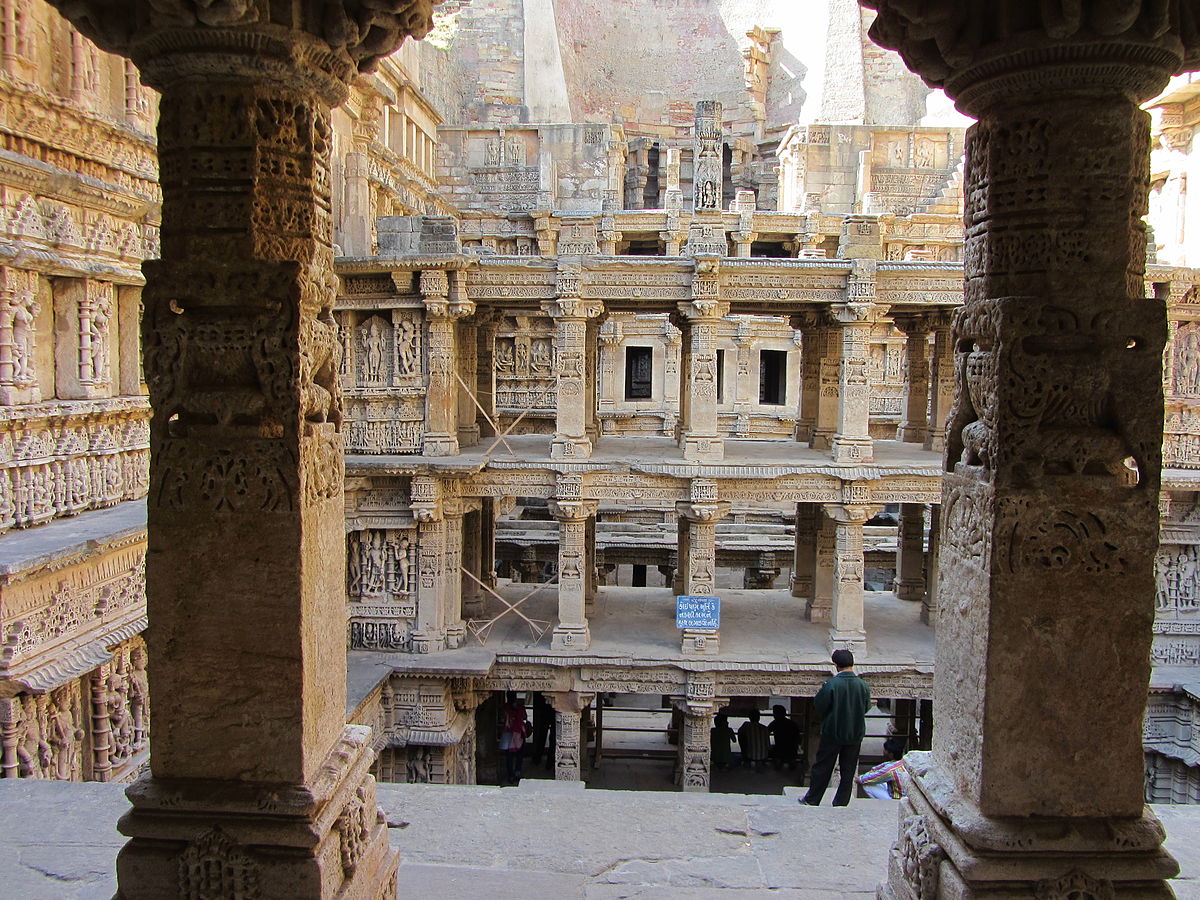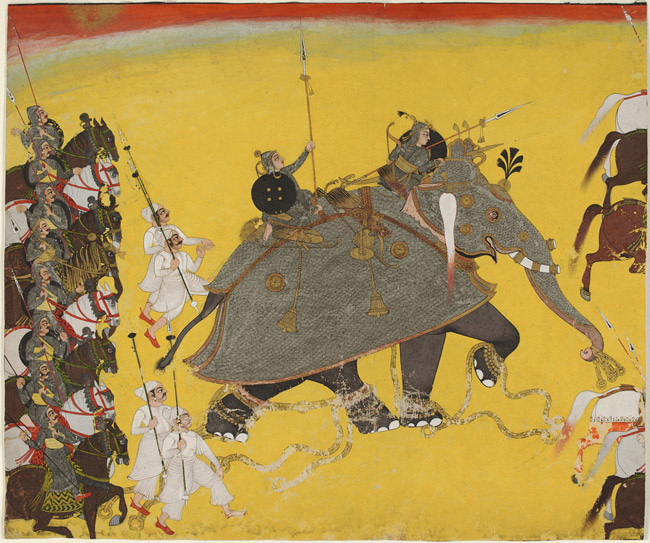Naiki Devi, the Gujarati Queen from Goa Who Defeated Muhammad Ghori
One of the toughest women in the history of India, Naiki Devi’s unflagging courage and indomitable spirit are at par with the legendary Rani Laxmi Bai of Jhansi and Rani Tarabai of the Marathas.

From the legendary Amazons of Greek mythology to Queen Boadicea of Roman Britain, warrior women have fascinated the world for millennia. India, too, has its own share of indomitable women who proved themselves to be fierce fighters and skilled leaders.
From outlining military strategies to storming battlefields, these unflaggingly courageous Indian women were truly a force to be reckoned with. Rani Lakshmibai, Rani Abbaka Chowta and Kittur Chenamma are three of the more well-known examples. However, there are many more whose stories have been forgotten.
Among these unsung warrior women is Naiki Devi, the Goan princess who went on to become the Chalukya queen of Gujarat and defeat the mighty Muhammad Ghori in the battlefield.
Here’s the untold tale of how Naiki Devi etched her mark in the annals of history.

Photo Source: Representative Image
The year was 1173 and the young Ghurid prince, Muhammad Shahabuddin Ghori (his royal title was Mu’izzuddin), had just conquered the Ghaznavids in Afghanistan. An ambitious ruler, he did something which Alexander’s troops, the Persians, the Arabs and even Mahmud of Ghazni could not — conduct successful raids deep into the heart of Indian territory.
Muhammad Ghori’s first invasions were on the states of Multan and the fortress of Uch. After capturing Multan and Uch, he turned southwards towards the southern Rajputana and Gujarat. His target? The prosperous fortified town of Anhilwara Patan.
Established by Vanraj of the Chapotkata dynasty in the 8th century, Anhilwara Patan was capital of the Chalukya (also known as the Solankis) who supplanted the Chapotkatas. According to American historian Tertius Chandler, the ancient citadel was the tenth-largest city in the world in the year 1000, with a population of approximately 100,000.
When Ghori attacked Anhilwara, it was under the rule of Mularaja-II who had ascended the throne as a boy after the demise of his father Ajayapala.
However, it was actually his mother, Naiki Devi, who took over the reins of the kingdom as queen regent.
Interestingly, it was this very fact that had made Ghori confident about capturing Anhilwara — he assumed that a woman and a child would not provide much resistance. He would soon learn otherwise.

The daughter of the Kadamba king of Goa, Naiki Devi was well-trained in sword fighting, cavalry, military strategy, diplomacy and all other subjects of statecraft. Undaunted by the prospect of Ghori’s imminent attack, she took command of the Chalukyan force and threw herself into organizing a well-planned opposition to the invading army.
Naiki Devi also sent out emissaries to forge crucial partnerships and request assistance from nearby provinces for help, including Prithviraj Chauhan. While these kingdoms did not accede to her request, she did receive aid from Chalukyan feudatories such as the leaders of the Naddula Chahamana clan, the Jalor Chahamana clan, and the Arbuda Paramara clan.
Realising that this wasn’t enough to defeat the massive hordes of enemy soldiers, the astute Naiki Devi carefully planned a battle strategy that would even out the odds. She chose the rugged terrain of Gadaraghatta — an area at the foot of Mount Abu near the village of Kasahrada (in the modern-day Sirohi district) — as the site of the battle.
The narrow hill passes of Gadaraghatta was unfamiliar ground for Ghori’s invading army, giving Naiki Devi a huge advantage and balancing the odds in one masterful move. And so when Ghori and his army finally arrived Kasahrada, the fierce warrior queen rode into the battle with her son on her lap, leading her soldiers in a fierce counter-offensive. What followed was a rout.
You May Like: The Forgotten Story of Rani Tarabai, The Indomitable Warrior Queen of the Marathas
In the battle that ensued (known as the battle of Kasahrada), the outnumbered Chalukyan army and its troop of war elephants crushed the invading force that had once beaten the mighty sultans of Multan in battle.
Facing a major defeat, Ghori fled with a handful of bodyguards. His pride was shattered, and he never again tried to conquer Gujarat. Instead, he looked towards the more vulnerable Punjab, entering north India through the Khyber Pass next year.
Interestingly, this was the same route taken by Alexander the Great and Mahmud of Ghazni. Later on, Timur (Tamurlane) would also take the same route during his conquest of northwest India in 1383, and so would his descendant Babur, on his way to founding the Mughal empire in India in 1526.
As for the Battle of Kasahrada, had the indomitable queen of the Chalukyas not taken charge, it is quite likely that the history of India would have been very different. Interestingly, Naiki Devi’s victory finds several mentions in the accounts of the state chroniclers of Gujarat as well as Chalukyan inscriptions.

For instance, Gujarati poet Someshwara’s works mention how the army of ‘Bala’ Mularaja (infant king) had defeated the lord of Turushkas (Turkish people) and crushed the mlechchha (foreign) army. Another poet, Udayaprabha Suri, states in his Sukrita-Kirti-Kallolini, that Naiki Devi’s army had defeated the Hammira (Sanskrit form of Emir) and his mlechchha army, whose soldiers were covered from head to toe in order to protect themselves.
Furthermore, a Chakukyan inscription from the reign of Bhima II (Mularaja II’s brother and successor) states that even a woman could defeat the Hammira during the reign of Bala Mularaja.
Minhaj-i-Siraj, a 13th century Persian chronicle, also mentions the Chalukyan victory in his account. According to him, Muhammad of Ghor marched towards Nahrwala (Anhilwara) via Uchchha and Multan. “The Rae (king) of Nahrwala was very young but commanded a huge army with war elephants.”
In the ensuing battle, “the army of Islam was defeated and put to rout”, and the invading ruler had to return to without any accomplishment.

The 16th century writer Badauni also mentions the invader’s defeat, and states that he retreated to his homeland with great difficulty.
However, the most detailed account of the Battle of Kasahrada can be found in the works of 14th century Jain chronicler Merutunga who describes how Naiki Devi fought the mlechchhas at Gāḍāraghaṭṭa and conquered their leader.
One of the toughest women in the history of India, Naiki Devi’s unflagging courage and indomitable spirit are at par with the legendary Rani Laxmi Bai of Jhansi, Rani Tarabai of the Marathas and Rani Chennamma of Kittur. Yet, little is written about her or her incredible story in the history books. It is time this changed.
TBI Trivia: Naiki Devi’s capital, Anhilwara or present-day Patan, is also home to a mesmerisingly beautiful stepwell called the Rani ka Vav. The intricately constructed 11th century monument is a subterranean water storage system and was built by Queen Udaymati for her husband King Bhimdev I of the Chalukya (Solanki) dynasty.
Designed in the Maru-Gurjara style as an inverted temple highlighting the sanctity of water, it has seven levels of stairs, more than 500 principal sculptures and over a thousand minor ones on its panelled walls!
(Edited By Vinayak Hegde)
Also Read: The Forgotten Story of Rani Abbakka Chowta, the Fearless Warrior Queen of Tulu Nadu
Like this story? Or have something to share? Write to us: [email protected], or connect with us on Facebook and Twitter.
NEW: Click here to get positive news on WhatsApp!
This story made me
-
97
-
121
-
89
-
167
Tell Us More
We bring stories straight from the heart of India, to inspire millions and create a wave of impact. Our positive movement is growing bigger everyday, and we would love for you to join it.
Please contribute whatever you can, every little penny helps our team in bringing you more stories that support dreams and spread hope.



















